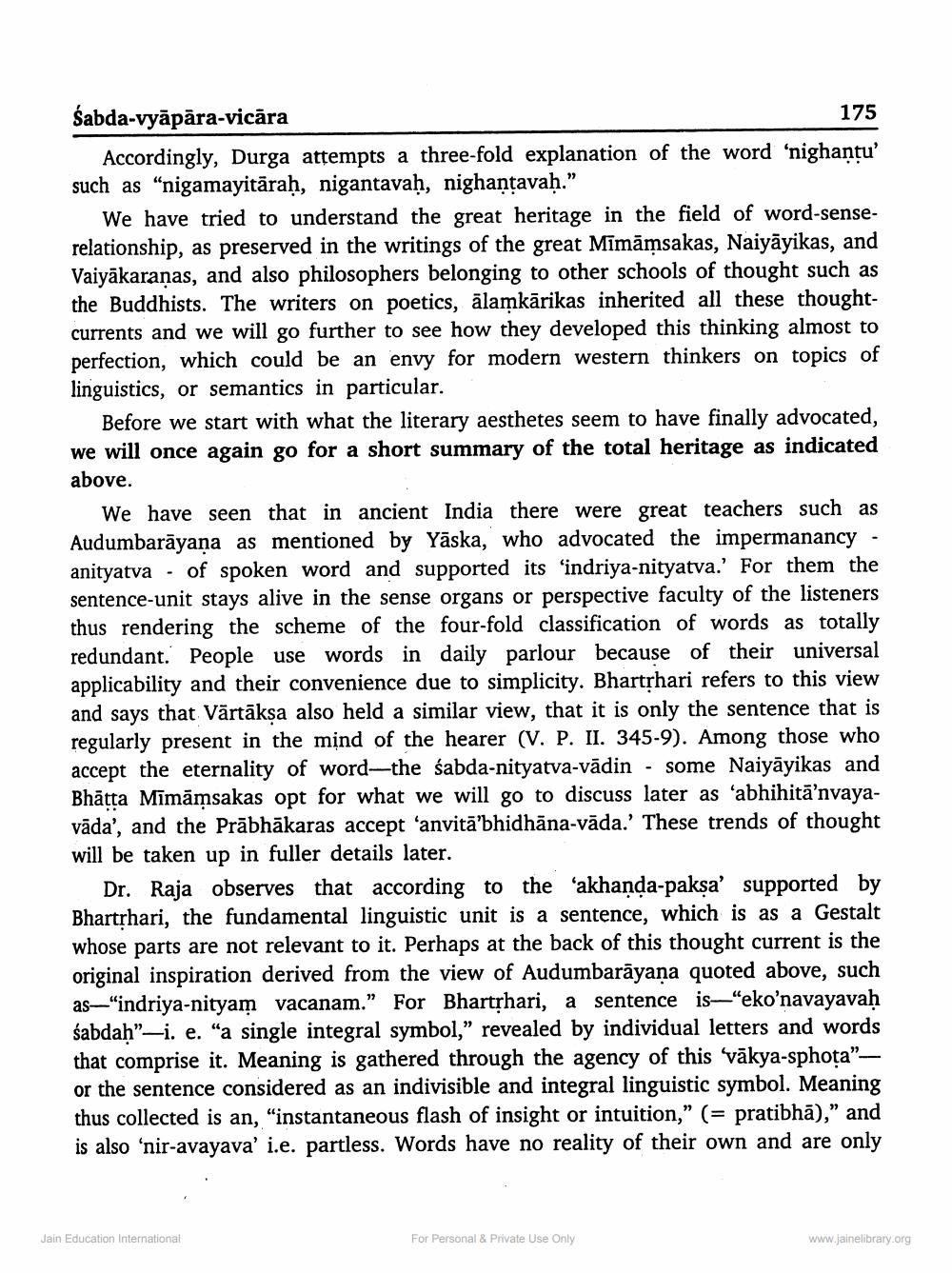________________
Sabda-vyāpāra-vicāra
175 Accordingly, Durga attempts a three-fold explanation of the word 'nighantu' such as “nigamayitāraḥ, nigantavaḥ, nighantavaḥ."
We have tried to understand the great heritage in the field of word-senserelationship, as preserved in the writings of the great Mimāmsakas, Naiyāyikas, and Vaiyākaranas, and also philosophers belonging to other schools of thought such as the Buddhists. The writers on poetics, ālamkārikas inherited all these thoughtcurrents and we will go further to see how they developed this thinking almost to perfection, which could be an envy for modern western thinkers on topics of linguistics, or semantics in particular.
Before we start with what the literary aesthetes seem to have finally advocated, we will once again go for a short summary of the total heritage as indicated above.
We have seen that in ancient India there were great teachers such as Audumbarāyaṇa as mentioned by Yāska, who advocated the impermanancy - anityatva - of spoken word and supported its 'indriya-nityatva.' For them the sentence-unit stays alive in the sense organs or perspective faculty of the listeners thus rendering the scheme of the four-fold classification of words as totally redundant. People use words in daily parlour because of their universal applicability and their convenience due to simplicity. Bhartrhari refers to this view and says that Vārtāksa also held a similar view, that it is only the sentence that is regularly present in the mind of the hearer (V. P. II. 345-9). Among those who accept the eternality of word—the sabda-nityatva-vādin - some Naiyāyikas and Bhātta Mīmāmsakas opt for what we will go to discuss later as 'abhihitā’nvayavāda', and the Prābhākaras accept 'anvitā'bhidhāna-vāda.' These trends of thought will be taken up in fuller details later.
Dr. Raja observes that according to the 'akhanda-paksa' supported by Bhartrhari, the fundamental linguistic unit is a sentence, which is as a Gestalt whose parts are not relevant to it. Perhaps at the back of this thought current is the original inspiration derived from the view of Audumbarāyana quoted above, such
s—“indriya-nityam vacanam.” For Bhartshari, a sentence is—"eko’navayavah śabdah”-i. e. "a single integral symbol," revealed by individual letters and words that comprise it. Meaning is gathered through the agency of this vākya-sphota" - or the sentence considered as an indivisible and integral linguistic symbol. Meaning thus collected is an, "instantaneous flash of insight or intuition,” (= pratibhā)," and is also 'nir-avayava' i.e. partless. Words have no reality of their own and are only
Jain Education International
For Personal & Private Use Only
www.jainelibrary.org




